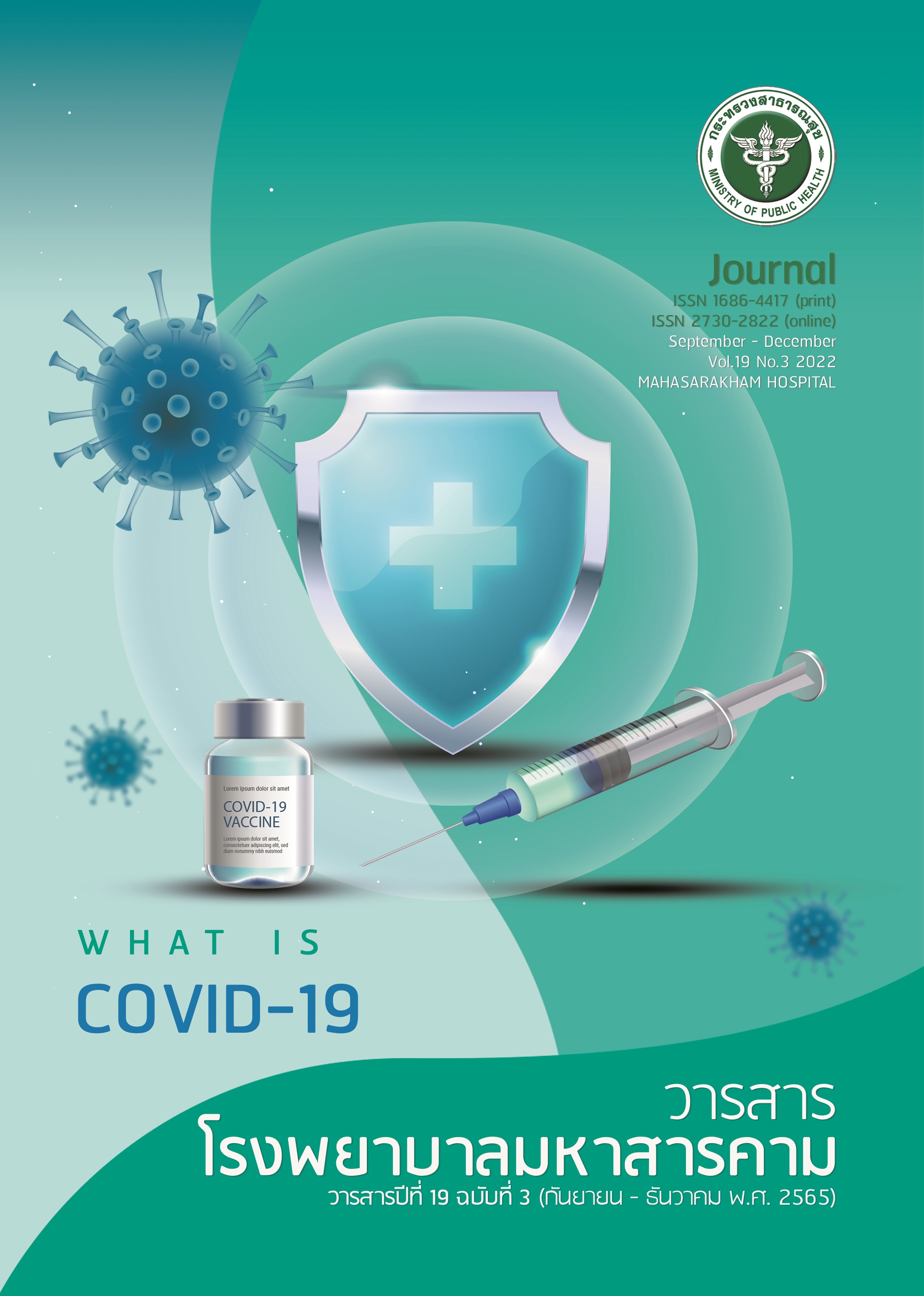ความชุกและปัจจัยที่มีผลต่อการนำยาเหลือใช้มาพบแพทย์ของผู้ป่วยโรคเรื้อรัง
คำสำคัญ:
ความชุก, ปัจจัย, ยาเหลือใช้, โรคเรื้อรังบทคัดย่อ
วัตถุประสงค์ : เพื่อศึกษาความชุก สาเหตุและปัจจัยที่สัมพันธ์กับการนํายาเหลือใช้มาพบแพทย์ของผู้ป่วยโรคเรื้อรัง
รูปแบบและวิธีวิจัย : การศึกษาแบบภาคตัดขวาง (Cross-sectional study) โดยใช้แบบสอบถามสัมภาษณ์ผู้ป่วยโรคเรื้อรังที่มารับบริการ ณ ศูนย์ส่งเสริมสุขภาพชุมชนเมือง เขตอำเภอเมืองลำปาง จำนวน 362 คน ด้วยการสุ่มแบบเฉพาะเจาะจง ระหว่างวันที่ 1 - 14 ตุลาคม 2561 วิเคราะห์ข้อมูลในรูปแบบจํานวน ร้อยละ ส่วนปัจจัยที่สัมพันธ์กับการนํายาเหลือใช้มาพบแพทย์วิเคราะห์ด้วยสถิติ Chi-square test
ผลการศึกษา : พบความชุกของผู้ป่วยโรคเรื้อรังที่นํายาเหลือใช้มาร้อยละ 41.7 และการนำยาเหลือใช้มาในผู้ป่วยที่ได้รับการแจ้งเตือนโดยบุคคลากรทางการแพทย์มีมากกว่าผู้ป่วยที่ไม่ได้รับการแจ้งเตือนให้นำยาเหลือใช้มาโดยบุคคลากรทางการแพทย์อย่างมีนัยสำคัญทางสถิติ คือ ร้อยละ 50.2 และ ร้อยละ 17.2 ตามลำดับ (P-value<0.05) สาเหตุส่วนใหญ่ที่นํายาเหลือใช้มา คือ แพทย์สั่งให้นํายามา (ร้อยละ 71.5) และตั้งใจเอามา เป็นจิตสํานึก เป็นทรัพย์สินของหลวง (ร้อยละ 8.6)
สรุปผลการวิจัย : เพื่อเป็นการกระตุ้นให้ผู้ป่วยนำยาเหลือใช้มาโรงพยาบาลควรมีมาตรการในการแจ้งเตือนให้นำยาเหลือใช้มาโรงพยาบาลอย่างเป็นระบบ รวมถึงควรมีการให้ความรู้เกี่ยวกับยาเหลือใช้ในผู้ป่วยโรคเรื้อรังเพิ่มมากขึ้น
เอกสารอ้างอิง
Division of Non Communicable Diseases. non-communicable disease information Number of morbidity and mortality rates 2016-2019. 2020 [cited 2021 12 December]. Available from: http://thaincd.com/2016/mission/documents-detail.php?id=13893&tid=32&gid=1-020.
World Health Organization. Noncommunicable diseases Online.2021 [cited 2021 12 December]. Available from: https://www.who.int/news-room/fact-sheets/detail/noncommunicable-diseases.
Diabetes Association of Thailand. Clinical Practice Guideline for Diabetes 2017. 2 ed. Pathum Thani: Romyen Media Company Limited; 2017.
Thai Hypertension Society. 2019 Thai Guidelines on The Treatment of Hypertension. 1 ed. Chiang Mai: Trick Think; 2019.
Poophalee T, Koonsawat C, phuradchaphon T, Srisaknok T. Explanations and Handling of Unused Medicines in Patients with Type 2 Diabetes and Hypertension: a Case of a Community at Ubon Ratchathani. Thai Journal of Pharmacy Practice. 2018;10:3-13.
Pattana Champunot. Leftover medicines and medicine use behavior of people in Chiang Mai province [Master of Pharmacy (Pharmacy Management)]. Chiang Mai: Chiang Mai University; 2010.
Thammawut W, Luewitwat P. A survey of the quantity and value of medicines left in outpatients Department of Internal Medicine Siriraj Hospital. Siriraj Medical Bulletin. 2014;7:20-5.
Al-Siyabi K, Al-Riyami K. Value and types of medicines returned by patients to Sultan Qaboos University Hospital pharmacy, Oman. Sultan Qaboos University Medical Journal. 2007;7(2):109-15.
Sirinavasatien P. The efficiency of management the left over medication in diabetic patients in special clinics. MAHASARAKHAM HOSPITAL JOURNAL. 2018;15:111-8.
Tangchittam S. Cost-Benefit Analysis of Leftover-Medicine Reduction Measures: A Case Study of Type 2 Diabetic Patients at Thai Red Cross Health Station NO.5, Samut Prakan Province, Thailand [Master Degree]: Thammasat University; 2016.
Krejcie RV, Morgan DW. Determining sample size for research activities. Educational and psychological measurement. 1970;30(3):607-10.
StataCorp. Stata Statistical Software: Release 13 CS, TX: StataCorp LP. 2013.
Chankhonkaen A, Singhto C, Wongthichai T, Uttaphut S, Waleekajornlert O, Ratanachotpanich T. Evaluation of the use of video media on drug waste on the knowledge and satisfaction of outpatients with diabetes and cardiovascular disease. Isan Journal of Pharmaceutical Sciences. 2013;9(1):Appendix 21.
Charoenchokthavee W, Lertwattanachai T, Rodhedbhai W, Kobwanthanakun S. Analysis and Management of Unused Medications Problem in Urban Living Area. Vajira Medical Journal. 2013;57(3):147-60.
ดาวน์โหลด
เผยแพร่แล้ว
รูปแบบการอ้างอิง
ฉบับ
ประเภทบทความ
สัญญาอนุญาต
ลิขสิทธิ์ (c) 2022 วารสารโรงพยาบาลมหาสารคาม

อนุญาตภายใต้เงื่อนไข Creative Commons Attribution-NonCommercial-NoDerivatives 4.0 International License.
วารสารนี้เป็นลิขสิทธิ์ของโรงพยาบาลมหาสารคาม






